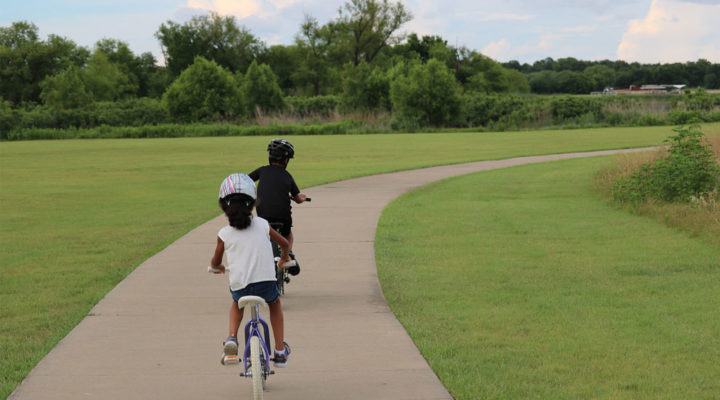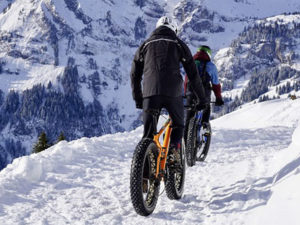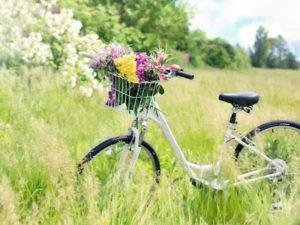
Biking is not only fun but also a healthy way to stay fit. The experience is breathtaking and thrilling. However, unless the safety standards become a personal responsibility, chances are as motorcyclists our lives are exposed to the risks.
Therefore, you not only need your top motorcycle helmet but also a solid understanding of what are the bike safety tips, to stay active on the road. In addition, on why it is important to stay safe.
According to the Insurance Institute for Highway Safety, 2 percent of motor vehicle crash deaths are related to bicyclists, worst injuries are to the head. 300,000 kids annually are taken to the emergency department because of bike-related injuries with at least 10,000 of the cases requiring in-patient admissions
Notably, helmets alone help reduce the odds of head injury by 50 percent and the odds of head or face or neck injury by a whopping 33 percent. Now, that is significant. Don’t you think? But I agree, a lot still needs to be done. The statistics can go on and on and this is why bike safety is essential.
Bike Safety Tips
Whether you are on your motorcycle or a bicycle, the fresh breeze on the road hitting you shouldn’t distract you from staying active and take up the appropriate road measures.
Remember, you need to arrive at your destination not only harmless but also keep third parties safe. With over 10 years now as a fervent bicyclist, I would also recommend you keep in mind these common basic safety tips. Your life is precious.
Tip 1: Improve your knowledge and safety skills
 There is no doubt you will always ride your bike or motorcycle on the roads, highways, and neighborhood; name it all.
There is no doubt you will always ride your bike or motorcycle on the roads, highways, and neighborhood; name it all.
Consequently, bicycling requires you to embrace the sensory and cognitive skills at all times, a lot of care and growth of your riding skills need to be embraced.
Besides, you can improve on how you ride safely on the road by taking the initiative to learn and know how to use modern tech safety devices like wearing helmets, lights, reflective tapes plus much more.
For instance, most states will award you with a motorcycle license once you learn and pass the skills test. In others, you have to attend a safety class.
Nevertheless, even if your state doesn’t require you to go through all this, take a personal initiative to study the traffic safety laws. Taking a course on bike riding will help you learn and build your skills quickly.
Learn how you need to respond to emergency situations while riding and take the challenge to try out new and better skills in a controlled environment. This will ultimately boost your confidence on the road.
Ride within your skill level and avoid trying to imitate your ‘expert’ friend, good in maneuvering or weaving in and out of traffic super-fast, yet you are an apprentice. The art to control bikes on curvy roads will take a gradual process to learn.
Tip 2: Safety bicycling gear
Consider wearing brighter outfits and a reflective tape on your bike or motorcycle easy visibility on the road. This could be helpful when I darker surroundings or at night.
Am not a fan of wearing shorts or flip-flops while bike riding. Your skin should, at least, be protected from even a slight bruise during a crash, if you wear clothing to cover your skin.
Personally, I have leather on my bike wear. Vented lightweight and breathable motorcycle jackets with heavy-duty armor panels are great ideas too. You can pick a lightweight bike lock for better safety.
 Avoid wearing loose-fitting shoes or untied shoes including dangling backpacks. This might not only get accidentally on the chains but cause a distraction while speeding and concentrating on the road.
Avoid wearing loose-fitting shoes or untied shoes including dangling backpacks. This might not only get accidentally on the chains but cause a distraction while speeding and concentrating on the road.
Opt to wear shoes that have a better and stable gripping of the bike pedals or motorcycle foot peg positioning. They should be the right and comfortably fitting shoes. Look for durable shoes or boots with a strong sole for enhanced protection of your feet.
Invest in a well-fitting helmet to protect you from possible serious brain injuries in the event of a fatal crash or fall. Inspect that your helmet has a safety sticker.
Personally, I like those approved by the Consumer Product Safety Commission (CPSC), the Snell Memorial Foundation, American National Standards Institute (ANSI) or American Society for Testing and Materials (ASTM). Always wear your helmet when you ride. A thule bike rack is also worth investing in case you want to bring your bike with you to ensure it is safely fastened in your car.
Tip 3: Leave enough space around
If you are riding on the footpath, be keen to check around for cars moving into and out of the ridgeways. Keep in mind the pedestrians and give them enough space when passing them. Use your bell or honk to let them know you are behind them and are about to overtake them.
Tip 4: Avoid distraction
This should be avoided at all costs. You need to stay hyper-aware of everything going on around you. Don’t assume that drivers will always spot you on time.
Avoid taking your hands off your motorcycle or bike as this leaves you with less control, just in case of an emergency need to brake or shift a position. Don’t wear headphones or put your phone where it will be hard for you to get it, forcing you to react and end up being distracted.
Other bike safety tips for activeness
- If it is possible, avoid riding at dawn or dusk when it might be harder for drivers to see you.
- Cover up yourself appropriately according to the weather changes
- Be keen when riding on heavy traffic flow while avoiding curbs, storm drains, soft or loose gravel among other unsafe road parts or terrain.
- Carry water in your bike or motorcycle water container mounting and other bike accessories.
- Always maintain your bike or motorcycle regularly.
- Look around keenly twice before making a move.
Final Words
Motorcycles or bicycles don’t come with an exterior framing, like vehicles, to absorb crash forces. Additionally, they don’t have seatbelts and are not as stable like cars. This means you are likely to bear directly the impact in case of a crush.
So cheating death shouldn’t be an open chance nor bike safety tips taken for granted. Discipline yourself to follow always the safety rules and procedures for safe biking or motorcycling. It’s my hope that you are up to speed on how to stay safe when next going riding. But most importantly; let it be fun.
Leave a Reply